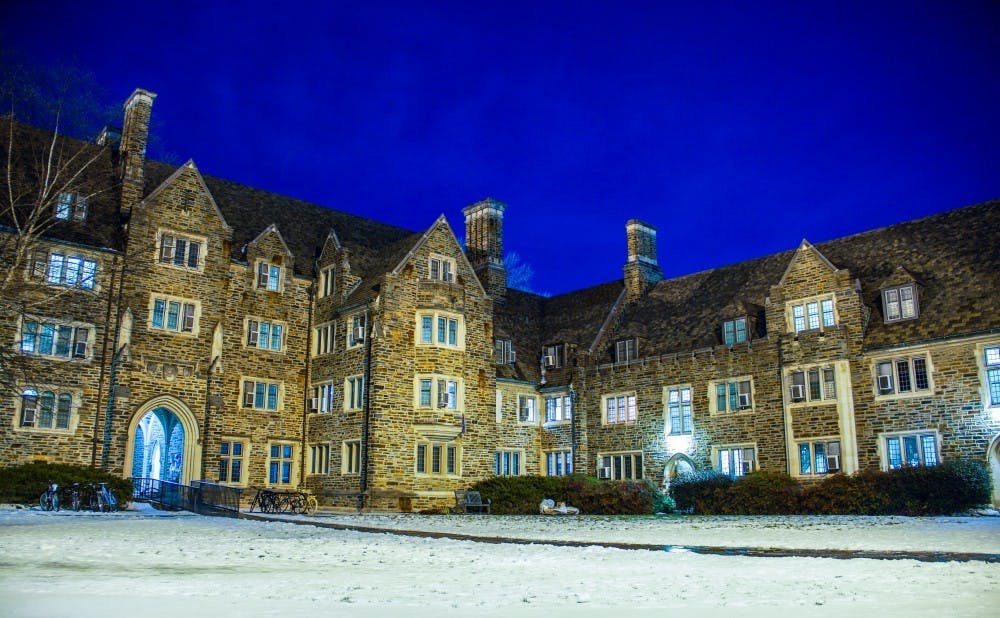It’s that time of year again. The days are short, the weather is cold and finals season is barely in the rearview mirror. Some students at Duke may be facing an added obstacle: seasonal depression.
What is seasonal affective disorder (SAD)?
“SAD, or seasonal depression, is really like experiencing a depressive episode or depressive symptoms around the same time every year when the climate changes, and there's less sunlight,” said Dr. Briana Brownlow, a clinical associate in the Department of Psychiatry and Behavioral Sciences at Duke.
Symptoms mirror those of Major Depressive Disorder (MDD), including fatigue, feeling sad, changes in appetite and weight, and loss of interest in formerly pleasurable activities. They usually occur in the fall and winter months, with shorter, darker days leading to depression, and tend to improve during the spring when there’s more sunlight. SAD can affect up to 10% of people in the U.S.
“The challenge is that when the season changes, a lot of those things happen naturally — where we do go inside more — so we can be more socially withdrawn,” Brownlow said.
How might seasonal affective disorder impact students?
SAD can have a particularly strong impact on college students because it often coincides with finals season and the start of the new semester, both of which are common sources of stress for students.
Lisa Adams, director of Duke Counseling and Psychological Services, said that CAPS tends to see an influx of students seeking counseling during the winter months. But Adams can’t say for certain whether SAD is the sole explanation for the increase, as she mentioned that academic anxiety related to semester changes could play a role.
“I know that our numbers are higher during those periods,” Adams said. “I can't ... attribute that to SAD, but I can say that I think it’s probably a contributing factor.”
Many students hailing from colder areas of the country, like the Northeast or the Midwest, may notice their symptoms improving in the warmer and sunnier North Carolina climate. Others, especially those coming from warmer climates, might see their mental health deteriorate.
“If you're coming from Miami, it might feel worse,” Adams said. “If you're coming from way up north and Canada or something, you might find that you feel a lot better about your symptoms.”
How can Duke students manage seasonal affective disorder?
Students experiencing any mood disorder or increased stress and sadness during the wintertime have a variety of treatment options at Duke.
Students don’t need an appointment to seek treatment from Duke’s Counseling and Psychological Services (CAPS). To get started with CAPS, students can call 919-660-1000 or visit the Wellness Center in person on Mondays and Tuesdays from 9:00am to 6:00pm or on Wednesdays, Thursdays, and Fridays from 9:00am to 4:00pm.
Upon arrival, students must complete some paperwork and wait to be seen by a member of the CAPS team for a 15-20 minute clinical assessment.
“They'll do the safety assessment, which is a normal kind of part of business,” said Adams. “And then they'll talk with the student about what's going on. It should be a collaborative experience for the student.”
The CAPS professional will work with the student to develop a game plan moving forward. Students might decide to receive short-term therapy at CAPS, or they may be referred to a community mental health provider for longer-term treatment.
All community providers take Duke student insurance and are vetted by CAPS. CAPS also provides financial assistance for co-pays and transportation.
Adams also recommends that students get exercise, stay social, and take advantage of the Moments of Mindfulness programs at the Duke Wellness Center.
Brownlow suggests that students purchase a light box that mimics outdoor light to relieve the symptoms of SAD.
“It mimics the sunlight in ways that help to regulate your circadian rhythms that can throw people off,” she said.
Seasonal affective disorder or winter blues?
SAD is widely considered a valid and diagnosable disorder as a form of clinical depression. But some researchers cast doubts on its legitimacy.
A 2016 study analyzed 2006 data from the Centers for Disease Control and Prevention, which administered questions used to screen for depression to 34,000 U.S. adults over the course of the year. According to the data, rates of depression did not fluctuate seasonally, nor did they increase disproportionately in northernmost areas with low light exposure.
Confirmation bias may also be at play. The widespread phenomena of “winter blues” in popular culture may create an expectation of SAD that causes us to incorrectly associate normal holiday-time stressors with seasonal depression.
“It's possible that during this [time of] year, there are coinciding stressors and things that come into play to create winter blues that aren't necessarily about the season or the light,” Brownlow said.
Other researchers, however, push back against the narrative of “winter blues,” saying it’s more serious than that.
Kelly Rohan, a professor of psychological science and a clinical psychologist at the University of Vermont, told the New York Times that a “big, common misconception about SAD is that it’s just the ‘winter blues.’”
“People may not appreciate how severely someone who has SAD is affected,” Dr. Paul Desan, a psychiatrist at the Yale School of Medicine, told the Times. For some people, “their life just shuts down for half the year.”
SAD can also occur during the warmer seasons. Called summer-pattern SAD, this pattern of depression is less common compared to its winter counterpart.
Get The Chronicle straight to your inbox
Signup for our weekly newsletter. Cancel at any time.
Mia Penner is a Trinity sophomore and an editor-at-large of The Chronicle's 119th volume.

